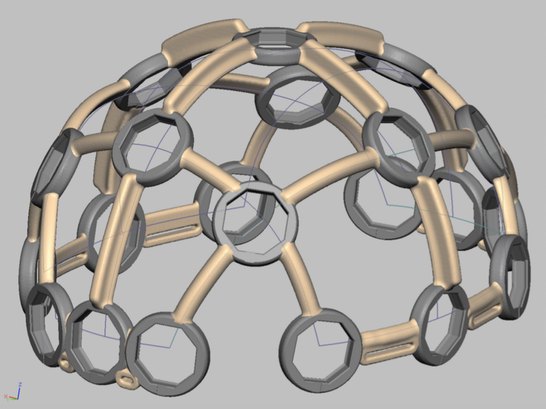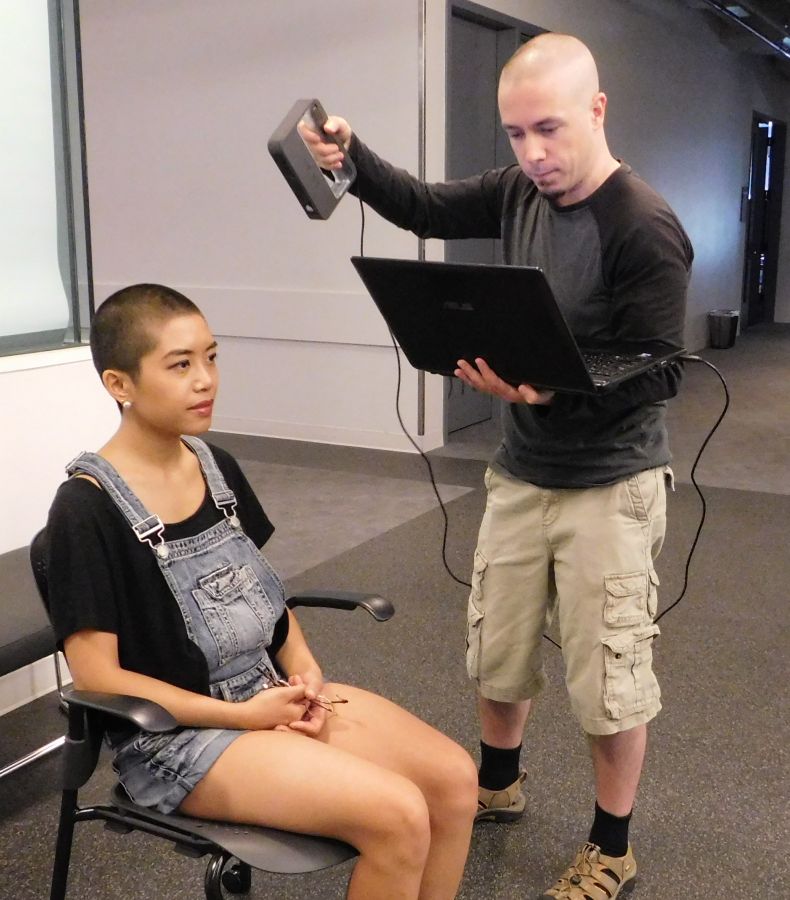Designing The Ultracortex
This is a blog post I wrote for the OpenBCI Kickstarter.
Designers who create products that function on and around the body have long used statistical measurements derived from anthropometric studies. In cases where custom fitting is impractical, the goal is to properly fit as many people as possible, perhaps offer a selection of sizes or adjustment functions for fine-tuning. For the Ultracortex project, it was apparent that simple measurements like head circumference were not nearly good enough for our purposes.
One of the most important features of the Ultracortex is the accurate electrode placement, which uses the 10-20 research standard. This establishes the locations of the electrodes using a parametric definition based relationships between key dimensions, much like those used in CAD software. The system is defined by starting with two anatomical reference points, the Nasion (the depression at the top of the nose) and Inion (the bump at the back of the skull). From these points, a series of divisions of the connecting lines establishes the electrode locations. A research-grade system would require these measurements to be taken on the scalp during set-up, which is a time-consuming and laborious process. An EEG headset is much faster than manual placement, but often compromises the accuracy of the locations, and so affects the accuracy of the data. To make use of the vast quantity of research data collected using 10-20 system, the electrode locations need to be as accurate as possible. In most cases, flexible arms or stretchable fabric is used to roughly approximate the placement. The trade-off of fast set up time for accuracy is often worth it. OpenBCI needed a headset that would be part of a platform which can be used as a serious research tool. While the application is more rigorous than a toy or game interface, it still needed to be quick and easy to use. Accuracy and stability of the electrodes was given a very high priority, along with the requirements that the headset be comfortable, fully adjustable, and finally, it needed to be produced on a desktop 3D printer. Bringing all these components together in one design, the Ultracortex was born.
Every head is different, not just in size but shape. Rather than simply measuring heads, we knew that 3D scanning would be the best method to capture the shape of the cranium and establish 3D locations for the electrodes. For the final headset design, a framework would hold the electrodes at the correct position and angle, and adjustable electrode holder would allow fine-tuning for different head shapes. Having created many wearable 3D printed designs in my ThreeForm brand, I saw that in many cases, the more accurately a design fits one person, the less accurately it fits everyone else. To create the best possible balance between all possible head shapes, we used 3D scanning to fit the parametric model to many heads, then averaged the 3D electrode locations together.

Curve-based parametric modeling of the M3 headset.
We had considered using publicly available MRI data, but they tend to be fairly low resolution (256^3 voxels), and they often crop out the scalp, since the brain is the area of interest. Surface scanning is far more accurate, and using this approach, and we were able to establish electrode locations with precision of better than a millimeter when using highly accurate white-light scanning. I happened to have my own head already scanned from a previous project to get the project started, but to create our database, we sought out volunteers willing to shave their heads for scanning. We made an effort to get the most diverse set of samples possible.
Head Scanning at 3D Systems
 Even a few women shaved their head for scanning to help us get the most diverse samples possible.
Even a few women shaved their head for scanning to help us get the most diverse samples possible.
Since high-accuracy industrial scanners were not always available, we double scanned some subjects to compare the high quality data with more readily available consumer grade 3D sensors like the 3D Systems Sense. While the detail of these devices is not nearly as high, the accuracy on a head is surprisingly good. As long as the scene contains sufficient geometry for alignment, the continuous surface of a shaved scalp captures nicely.
We aligned the different heads and visualized the difference. You would think one head is much like another, but once you see them in 3D, the differences are readily apparent, and the surface distance can be very large, even though the heads are about the same size. This confirmed our process, while a bit elaborate, would be much more accurate than simply choosing one random “medium size” head, and also gave us the data for how much adjustment range was needed for the electrodes.
To create our average geometry, we created a curve network similar to the 10-20 system on each head. Each head resulted in a mesh with the same structure, but different shape. The consistent topology allowed us to morph between different heads, groups of people, or blend all the heads into a single average. The resulting average of all heads created what we call the “Meta Dome.” As we scan more heads, they are added to the Meta Dome database and accuracy increases. This allows us to select various population groups, so we could, for example, make a headset tuned for the average women of a certain demographic, or a child of a certain age, rather than subjecting everyone to a single population-wide average. For the Ultracortex Mark III, our average was very consistent with typical circumference measurements, according to the anthropometric data we referenced. We offset these appropriately for large and small sizes, and have ranges of typical head measurement ranges to help people choose. The adjustment range of the electrodes creates enough overlap that there is a properly fitting Ultracortex for just about everyone.
Moving forward, we will increase our head-scan database size and consider any other factors we can find that influence function and comfort, such as hair styles and different types of electrodes. We are very excited to have the opportunity to also design fully custom headsets, which frees us from the constraints of general fitting, and allows us to truly focus on getting the best possible performance. In some cases will also have MRI data to target particular brain regions as accurately as possible. We have already done preliminary analysis on general data measuring brain-to-scalp distance, to get as close as possible to the area of focus.
Measuring electrical activity at the scalp surface is made much harder by the distance and the material between the location of the activity and the spot we measure. Hair, the skin of the scalp, the skull, and cerebrospinal fluid and other layers all diffuse and attenuate the signal we seek to explore. There is a lot of room for improvement in how the brain is analyzed using EEG techniques. With the accurate electrode placement of our 3D-printed headsets, the high-quality data produced by the OpenBCI board, and the advanced signal processing techniques our software team is applying in their custom algorithms, OpenBCI is pushing forward the state of the art in DIY brain research.





